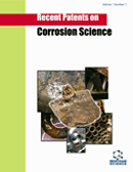Abstract
Synthesis of mesoporous alumina has received attention of researchers due to its application, as support for heterogeneous catalysts. In order to use mesoporous alumina as support, it should have a desired surface area, pore size, and pore volume. Generally, mesoporous alumina is synthesized using sol-gel method. This article reviews the influence of different parameters during the synthesis on the textural properties of mesoporous alumina from recent works and patents. The effect of variables during the synthesis route such as types of surfactant, pH of reaction medium, water concentration in hydrolysis reaction, as well as calcination temperature are reviewed and discussed.
Keywords: Mesoporous Alumina, pore size, sol-gel, calcination temperature, sol-gel routes, controllable mesopore, mesoporous silica, carbon aerogel, Surfactant, Anionic Surfactant, anionic surfactant system, Cationic Surfactant, Non-ionic Surfactant, Non-surfactant, nanocasting
 5
5







